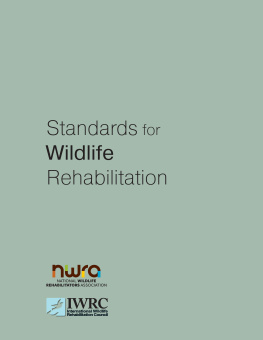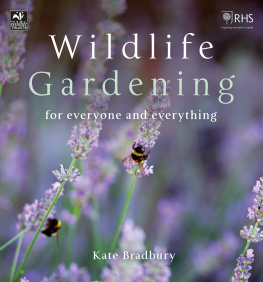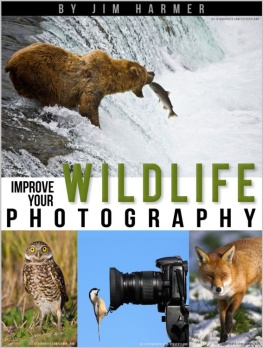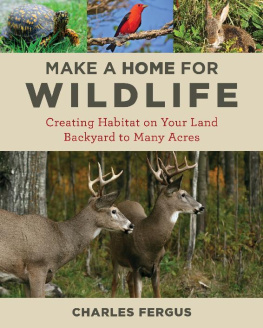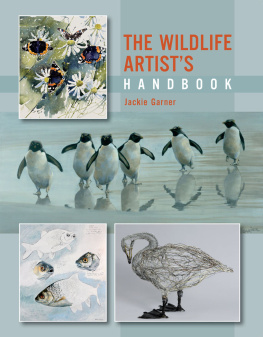Understanding Conflicts about Wildlife
Studies of the Biosocial Society
General Editor: Catherine Panter-Brick, Professor of Anthropology, Yale University
The Biosocial Society is an international academic society engaged in fostering understanding of human biological and social diversity. It draws its membership from a wide range of academic disciplines, particularly those engaged in boundary disciplines at the intersection between the natural and social sciences, such as biocultural anthropology, medical sociology, demography, social medicine, the history of science and bioethics. The aim of this series is to promote interdisciplinary research on how biology and society interact to shape human experience and to serve as advanced texts for undergraduate and postgraduate students.
Volume 1
Race, Ethnicity, and Nation: Perspectives from Kinship and Genetics
Edited by Peter Wade
Volume 2
Health, Risk, and Adversity
Edited by Catherine Panter-Brick and Agustn Fuentes
Volume 3
Substitute Parents: Biological and Social Perspectives on Alloparenting in Human Societies
Edited by Gillian Bentley and Ruth Mace
Volume 4
Centralizing Fieldwork: Critical Perspectives from Primatology, Biological and Social Anthropology
Edited by Jeremy MacClancy and Agustn Fuentes
Volume 5
Human Diet and Nutrition in Biocultural Perspective: Past Meets Present
Edited by Tina Moffat and Tracy Prowse
Volume 6
Identity Politics and the New Genetics: Re/Creating Categories of Difference and Belonging
Edited by Katharina Schramm, David Skinner and Richard Rottenburg
Volume 7
Ethics in the Field: Contemporary Challenges
Edited by Jeremy MacClancy and Agustn Fuentes
Volume 8
Health and Difference: Rendering Human Engagement in Colonial Engagements
Edited by Alexandra Widmer and Veronika Lipphardt
Volume 9
Understanding Conflicts about Wildlife: A Biosocial Approach
Edited by Catherine M. Hill, Amanda D. Webber and Nancy E.C. Priston
Understanding Conflicts about Wildlife
A Biosocial Approach
Edited by
Catherine M. Hill, Amanda D. Webber and Nancy E.C. Priston

First published in 2017 by
Berghahn Books
www.berghahnbooks.com
2017, 2020 Catherine M. Hill, Amanda D. Webber and Nancy E.C. Priston
First paperback edition published in 2020
All rights reserved. Except for the quotation of short passages for the purposes of criticism and review, no part of this book may be reproduced in any form or by any means, electronic or mechanical, including photocopying, recording, or any information storage and retrieval system now known or to be invented, without written permission of the publisher.
Library of Congress Cataloging-in-Publication Data
Names: Hill, Catherine M., editor. | Webber, Amanda D., editor. | Priston, Nancy E.C., editor.
Title: Understanding conflicts about wildlife: a biosocial approach / edited by Catherine M. Hill, Amanda D. Webber, and Nancy E.C. Priston.
Description: New York: Berghahn Books, 2017. | Series: Studies of the biosocial society ; volume 9 | Includes bibliographical references and index.
Identifiers: LCCN 2016054879 (print) | LCCN 2016056906 (ebook) | ISBN 9781785334627 (hardback: alk. paper) | ISBN 9781785334634 (eBook)
Subjects: LCSH: Human-animal relationships. | Wildlife management. | Wildlife conservation. | Wildlife depredation.
Classification: LCC QL85 .U525 2017 (print) | LCC QL85 (ebook) | DDC 333.95/4--dc23
LC record available at https://lccn.loc.gov/2016054879
British Library Cataloguing in Publication Data
A catalogue record for this book is available from the British Library
ISBN 978-1-78533-462-7 (hardback)
ISBN 978-1-78920-820-7 (paperback)
ISBN 978-1-78533-463-4 (ebook)
Contents
Catherine M. Hill
Phyllis C. Lee
John Knight
Ketil Skogen
Angela Cassidy
Marc Brightman
Alia M. Dietsch, Michael J. Manfredo and Tara L. Teel
Lisa Naughton-Treves, Jessica LRoe, Andrew LRoe and Adrian Treves
Francine Madden and Brian McQuinn
Graham E. Wallace and Catherine M. Hill
Amanda D. Webber, Stewart Thompson, Neil Bailey and Nancy E.C. Priston
List of Figures and Tables
Figures
Tables
Acknowledgements
This book is the result of a workshop held by the Anthropology Centre for Conservation, the Environment and Development (ACCEND) at Oxford Brookes University on 1617 September 2011. We are very grateful to our various supporters: the department of Social Sciences, Oxford Brookes University; the Biosocial Society and the Royal Anthropological Institute. We would also like to thank Lucy Radford who helped organise the workshop and the early stages of this volume, and all those at Berghahn Publishers who assisted in the development and production of this volume.
Catherine Hill
Amanda Webber
Nancy Priston
INTRODUCTION
Complex Problems
Using a Biosocial Approach to Understanding Human-Wildlife Interactions
Catherine M. Hill
The term human-wildlife conflict is commonly used in the conservation literature to denote negative interactions between people and wildlife, i.e. where wildlife damage property including crops, or threaten the safety of livestock or even people. For many researchers interested in the conservation implications of these negative human-wildlife interactions, the entry point is a concern for wildlife. Consequently, the focus is often on what the animals do, and what people complain about. This perspective has, until very recently, dominated research and the design of conflict mitigation strategies. However, it is increasingly apparent that human-wildlife conflict is normally better understood as conflicts between different human groups, sometimes over how wildlife should be managed, but expressed as a clash between human and wildlife needs and activities (Madden 2004; Marshall, White and Anke 2007; Dickman 2010; Hill and Webber 2010; Redpath et al. 2013).
Increasingly researchers are labelling these human-wildlife conflicts as wicked problems (e.g. Bal et al. 2011; Marchini 2014; chapters 1 and 8, this volume). A wicked problem is one that is challenging or seemingly impossible to solve because of incomplete, contradictory and changing requirements that are often difficult to define. Such problems are characterized as multifaceted, involving multiple stakeholders who hold conflicting perspectives and values. Accordingly, these problems are hard to describe, tend to recur and may change in response to any attempt to solve them (Rittel and Webber 1984). Before such problems can be addressed there must first be some degree of consensus between interested parties as to what the problem is, and achieving this agreement can be a wicked problem in itself (Rittel and Webber 1984). But are human-wildlife conflicts truly wicked rather than simply complex?
A key feature of many human-wildlife conflicts is the involvement of multiple stakeholders whose priorities, perspectives and agendas are often incongruous, as illustrated clearly within this volume. These are common features of wicked problems. However, mitigation attempts to date mostly focus on developing technical solutions to reduce the negative impacts of wildlife behaviour on human property or safety, without recognizing or addressing underlying social conflicts. As a consequence, they are rarely fully successful in addressing these conflicts (see, for example, Webber, Hill and Reynolds 2007). Therefore, perhaps human-wildlife conflicts are perceived as wicked problems because it is only very recently that their complex, biosocial nature has been recognized, and hence attempts to mitigate them have fallen short through a lack of understanding of this complexity rather than the majority of them necessarily being unsolvable. As pointed out by Peter Balint and colleagues, not all problems with multiple stakeholders and uncertain outcomes are wicked (Balint et al. 2011: 30). Therefore, we should be cautious of labelling conflicts around wildlife as wicked, because it might encourage the view that these conflicts are unresolvable and thus it is impractical even to try addressing them, further jeopardizing human-wildlife coexistence.
Next page

